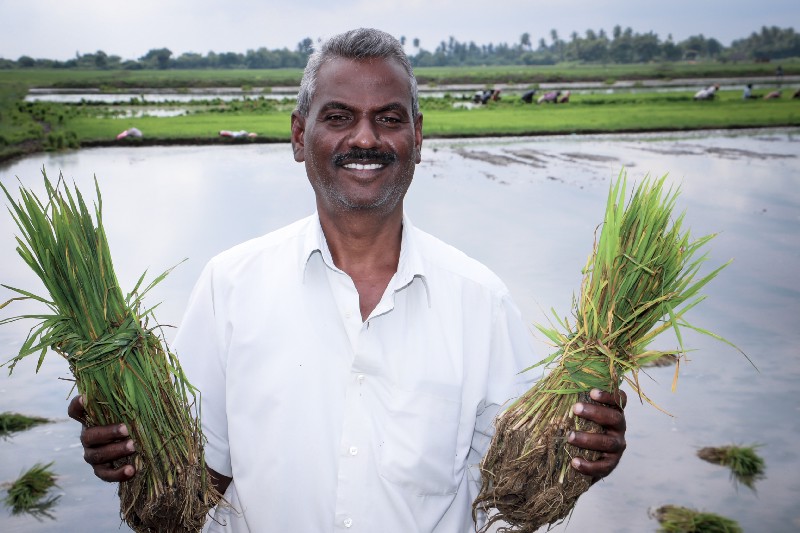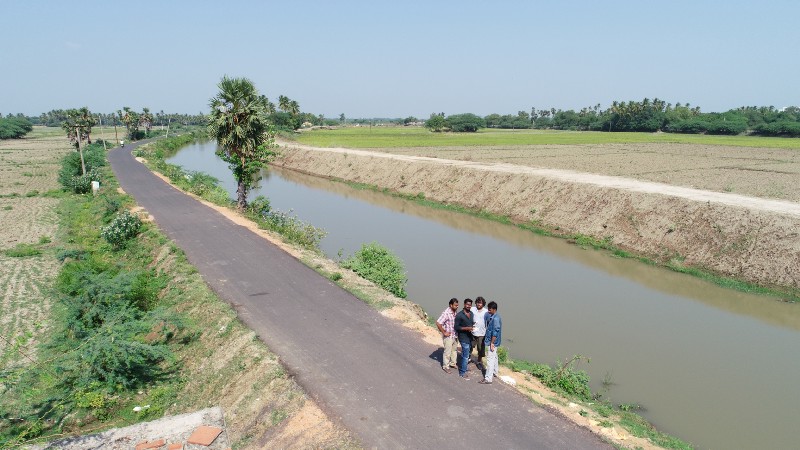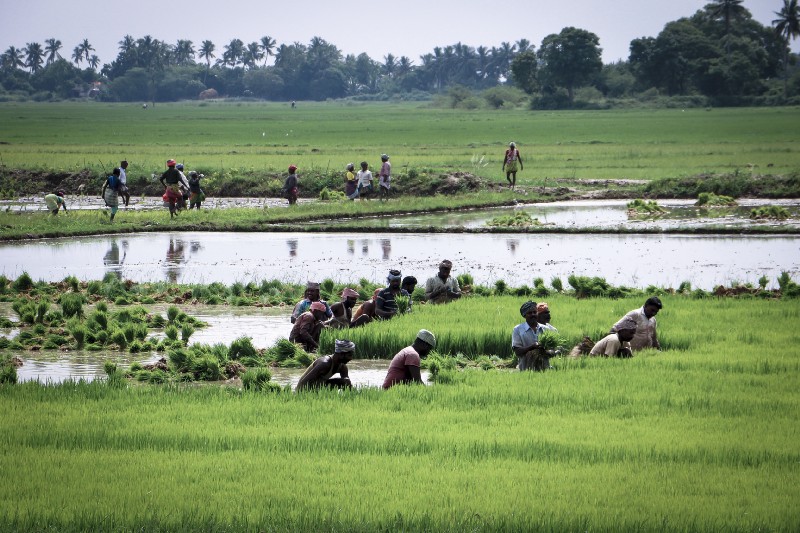How a restoration project of a 300-year-old agricultural canal gave us a lesson in history and ancient agricultural practices.
Recently, we at Hand in Hand India took on a project that involved restoring an agricultural canal. Little did we know that this would take us back in time. The canal in question, Sokkan Odai, has a historical connection that goes back 300 years. This agricultural canal that supplies water to the rice bowls of Cuddalore district in Tamil Nadu is a much revered one. A visionary from this region, Khan Saheb engineered this smart way of distributing water from the river Cauvery. This was in the early 1700s, and the canal became a historical marvel and is named the Khan Saheb canal or Sokkan Odai.
Farmers thrived, paddy grew and the region prospered. Picture lush green paddy fields, happy faces harvesting the crops and a general sense of well being.

In the late 1990’s, the Sokkan Odai began to dry out. Farmers were left with minimum water, crops suffered.
This was when farmers like Ramadoss turned away from agriculture and became a teacher instead. Ramadoss is from Killai, a panchayat in Cuddalore district and where Sokkan Odai is the primary source of water. His sons are now settled outside India, and Ramadoss is the only one in the family to carry on farming.

Nadana Sabapathy, yet another farmer from this area is in a similar situation. His elder son is a civil engineer settled in Saudi Arabia, and Sabapathy doesn’t expect him to come back to farming. His younger son might have completed his agricultural studies, but due to lack of opportunities is also settled in Singapore.
These farmers only reiterated the trend in the country; that the younger generation isn’t proud of its heritage of agriculture. Both Ramadoss and Sabhapathy have seen their next generation move to more lucrative professions. The talk among farmers became not what crop is going on next in their fields, but the bleak future of agriculture.
A little different was the situation in Jawadhu hills – another story that might be interesting.
What happened to the Sokkan Odai canal?
The Sokkan Odai canal is the lifeline of a region that supports more than 200 farmers. It is a 3.5 km stretch water that irrigates 6 villages. Traditionally, farmers in this region go for a 3-crop pattern over the year. However, over the past few decades, this pattern has dwindled down to a single crop. Farmers attributed this to the lack of water for agriculture.


The Sokkan Odai meanders along the paddy fields of Cuddalore
During the 2004 Tsunami and the 2015 floods that affected Tamil Nadu, the Sokkan Odai was heavily silted and the natural flow of water was affected. This, in turn, led to heavy usage of underground water for irrigation, reducing the water levels further. Traditional wisdom earlier saw to it that the multi-crop farming pattern enriched the soil with nutrients. The present-day single crop farming did not help the soil revive itself and thus created an ecological imbalance.
When the Sokkan Odai was given a new lease of life
In 2018, Hand in Hand India stepped in to take up restoration of the traditional canal in partnership with water major, V A Tech Wabag.
The canal needed extensive desilting, along 4 km from its starting point. This was a massive job that involved excavation of 19,000 cubic metres of soil!
Not just desilting, the canal was also deepened and widened wherever required. Ponds were formed along the Sokkan Odai for water storage. To prevent further erosion of soil, vetriver binders were planted along the banks of the canal.

The restored Sokkan Odai
HiH India has also put together the farming community to form a ‘Sokkan Odai Conservation Committee’. The group ensures farmers contribute a monthly maintenance amount for the canal. It also does regular upkeep of the canal with assistance from HiH India.
Reviving history and tradition
Farmer Ramadoss is all smiles, as he tells us how after a decade he has begun cultivation on 11-acre land. After the Sokkan Odai restoration, he expects five times his normal income.
In the last year, farmers in the Cuddalore region have had a good yield of paddy, thanks to the de-silted canal. Sabapathy is keen that his younger son sees the restored canal. He is convinced that his son might see that change is possible!
The project has helped 245 farmers spread over 350 hectares in this region.
Acres of farmland that have been lying fallow for more than 5 years have now been revived. There have also been instances of reverse migration in the Killai region, where farmers who had abandoned their lands have now come back to them. Today the farmers of Killai are confident that their lands will be able to bear the droughts as well as floods.

When we at HiH India took up this project, we expected nothing less of a challenge. However, the lessons we learnt were on a different scale; reviving the Sokkan Odai was equivalent to reviving a state’s history and bringing back the agrarian traditions of Tamil Nadu. In other times, we have brought water and sanitation to villages too, here’s another story.
HiH India’s Natural Resource Management wing has been implementing watershed programmes successfully since 2006 in Karnataka, Madhya Pradesh and Tamil Nadu. We also have helped organic farmers come together under a common umbrella called the ‘Indian Natural Farmer Producer Company Ltd. and help them market their products. Read more about our work here.






